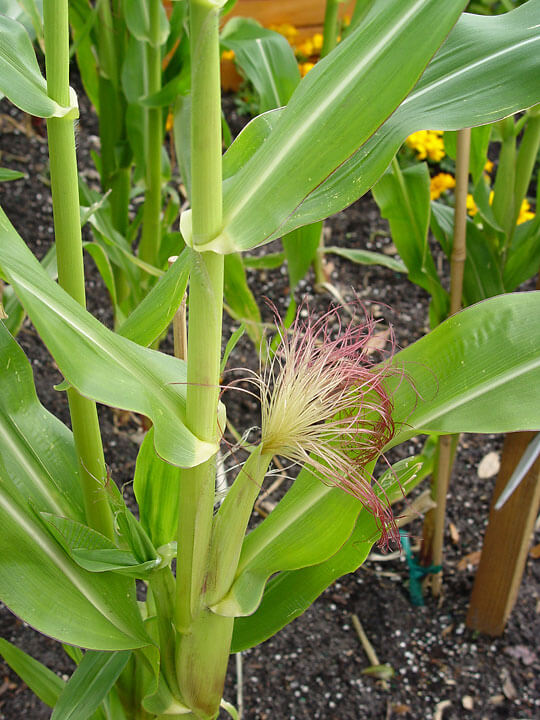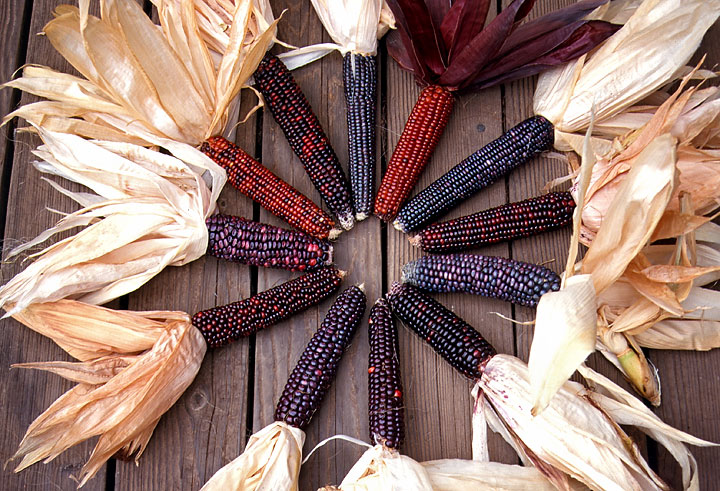
We call it corn, but pointy headed plant geeks know this species as Zea mays, or maize. Of all our garden vegetables, this giant grass can be the most challenging to new gardeners. This is because corn grows differently.
Corn as we know it is not a naturally created plant. It was altered millennia ago by human intervention which began in Mexico. They started with a wild grass known as teosinte, which bears little resemblance to modern corn. The plant we know today is such an altered species it can no longer naturalize or reproduce itself in the wild. That’s why it can go so wrong in the garden.
The corn plant produces tassels at the top where pollen is formed, then when the time is right it rains down upon the developing ears held lower on the plant. But weather doesn’t always cooperate with trickle-down pollination. That’s why planting corn is done differently than other bee-pollinated plants.
First time corn growers become disappointed with their ears because kernels are missing. This is a sign of incomplete pollination. The cause is plants too widely spaced or when grown in just one or two rows. Farmers must have 100% kernel development to sell their corn. They ensure pollination by growing corn in blocks, which ensures sufficient pollen density to guarantee a perfect ear.
In the home garden, strive for a block as long as it is wide so there’s even access to pollen for every plant. Space seeds and rows exactly as it says on the package, which is optimum for pollination. This demonstrates why it’s hard to grow corn in smaller gardens. There simply isn’t enough room to create a block large enough. That’s why those who grow corn do so directly in the ground rather than in raised beds or well defined potagers.

Corn, like most grass, is a heavy feeder that demands more fertile ground to thrive. You may have used compost and other organic matter to fortify the soil this spring, but that may not be enough for corn. Like turf grass, its favorite nutrient is nitrogen, which stimulates leaf and stem growth. For the home garden, boosting nitrogen levels in your corn growing soil can make a big difference in the vigor of your plants and the size of ears they produce. While farmers use commercial synthetic fertilizers, organic gardeners can achieve similar results with Black Gold products.
The best way to spot-fortify soil for corn is to work some fertilizer formulated for vegetables thoroughly into the ground as deeply as you can. This is our most potent organic source of nitrogen that’s OMRI Listed so you know it’s safe. At a whopping 18% nitrogen, a little bit goes a long way. This organic nitrogen is available to the corn plants over the entire growing season compared to synthetics that are here today and gone tomorrow.
Give your soil a lift before planting seed no matter what kind of corn you grow. Indian corn will produce more brightly colored ears for decorating. Heirloom varieties will thrive on the modest nutrient loads for a variety of unique flavors. Best of all, you’ll proudly serve picture perfect organic sweet corn to your family and friends when harvest rolls around.

